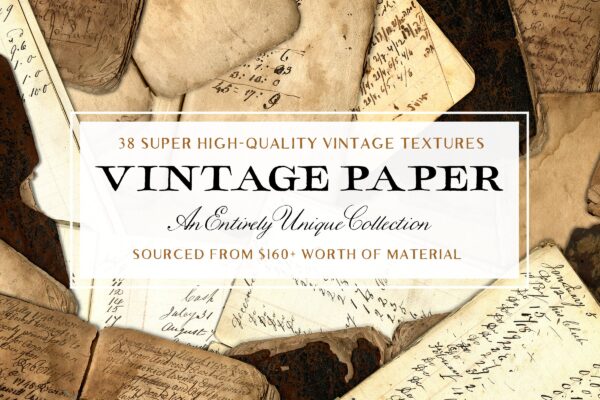In recent years, the design world has witnessed a resurgence of interest in more personal, tactile elements. One of the most prominent trends driving this shift is the use of handwritten texture in modern design. This trend, which incorporates the unique charm of hand-drawn elements, brings warmth, authenticity, and a personal touch to digital creations. In this article, we’ll explore why handwritten texture is trending, how it enhances design projects, and tips on how to incorporate it effectively into your own work.
The Appeal of Handwritten Texture
Handwritten texture has a distinct appeal that sets it apart from the clean, polished look of digital fonts and patterns. Here’s why it’s becoming a go-to choice for designers:
1. Personalization and Authenticity
In a world dominated by digital perfection, handwritten textures offer a refreshing break by introducing elements that are imperfect and personal. These textures mimic the organic flow of human handwriting, making designs feel more relatable and authentic. Whether it's for branding, packaging, or social media graphics, the inclusion of handwritten texture can make your project stand out by adding a layer of individuality.
2. Emotional Connection
Handwritten textures evoke a sense of nostalgia and warmth, often reminding viewers of handwritten notes, letters, or doodles. This emotional connection can be powerful in design, especially in projects that aim to build a strong brand identity or connect with audiences on a personal level. Using handwritten texture can convey sincerity and warmth, making your message more impactful.
3. Versatility Across Design Styles
Another reason why handwritten texture is trending is its versatility. Whether you're working on a modern minimalist design, a vintage-inspired project, or something in between, handwritten textures can be adapted to suit various styles. From subtle, light strokes to bold, expressive lines, there’s a handwritten texture to match any aesthetic.
4. Breaks the Digital Monotony
As digital design continues to evolve, there’s a growing desire to break free from the monotony of pixel-perfect creations. Handwritten textures introduce a touch of spontaneity and creativity that’s often missing in purely digital designs. This element of surprise and uniqueness is why so many designers are turning to handwritten textures to add character and depth to their work.
How to Effectively Use Handwritten Texture in Your Designs
While handwritten texture is incredibly versatile, using it effectively requires a thoughtful approach. Here are some tips to help you make the most of this trending design element:
1. Match the Texture to Your Project’s Tone
When incorporating handwritten texture into your designs, consider the overall tone and message of your project. For instance, a playful and informal handwritten texture might be perfect for a children’s brand, while a more elegant and refined texture could work well for wedding invitations or luxury packaging. The key is to choose a texture that complements and enhances the mood you want to convey.
2. Use Handwritten Texture as an Accent
Handwritten texture can be powerful, but it’s important not to overdo it. Consider using it as an accent rather than the main focus of your design. This could be in the form of handwritten headings, borders, or background elements that add depth without overwhelming the viewer. A little handwritten texture can go a long way in creating a balanced and engaging design.
3. Experiment with Layering
Layering handwritten textures with other design elements can create a rich, multi-dimensional effect. For example, you can combine handwritten textures with watercolor backgrounds, digital illustrations, or even photography to create a unique and visually interesting composition. Experiment with different blending modes and opacity settings to achieve the desired look.
4. Ensure Legibility
If you’re using handwritten texture for text, make sure it’s legible. While the charm of handwritten elements lies in their organic and sometimes imperfect nature, readability should not be sacrificed. Ensure that your text is clear and easy to read, especially when used for important information like headings or call-to-action buttons.
5. Pair with Complementary Fonts
When using handwritten texture alongside digital fonts, choose complementary typefaces that enhance the overall design. For example, pairing a clean, sans-serif font with a more casual handwritten texture can create a balanced contrast that adds visual interest. The key is to maintain harmony between the different elements of your design.
Where to Find High-Quality Handwritten Textures
If you’re looking to incorporate handwritten texture into your designs, there are plenty of resources available online. Here are a few places where you can find high-quality handwritten textures:
- Creative Market: Offers a wide range of handwritten textures, fonts, and other design elements created by independent artists.
- Design Cuts: Provides curated bundles of high-quality textures, including handwritten styles, perfect for various design projects.
- Envato Elements: A subscription-based service that gives you access to a vast library of handwritten textures and other creative assets.
Handwritten texture is more than just a trend; it’s a powerful tool that can bring authenticity, emotion, and personality to your designs. Whether you’re looking to add a touch of warmth to a brand identity, create a nostalgic feel, or simply break the monotony of digital perfection, handwritten texture can help you achieve your design goals. By following the tips outlined in this article, you can effectively incorporate handwritten texture into your projects and elevate your creative work to new heights.





Comments